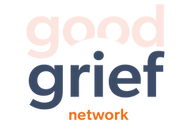Thank you for being a part of the Good Grief Network! As some of you know, we’ve recently started the second round of the Good Grief Psychosocial Resiliency Program. I’ll recap the first step in a bit.
Step One: Accept the problem and its severity.
What made you realize the extent of our systemic issues? When did you realize how serious climate change, ecological destruction, pervasive racism, and other social justice issues were? Was it a book, a class, a discussion with friends?
Don’t want to read the rest of this lengthy post? Check out this video that Good Grief Cofounder, Aimee Reau made!
Like most 12 Step Programs, This one starts with an acknowledgement of where we’re at. Once we accept the problem, we must continuously come back to how real or severe it is. It’s not possible to stay in this place of realization, because it’s painful and energy-consuming. So we must revisit it, and when we do, check our facts and assumptions and face the possibilities of where we’re headed.
(Note: Check out book Extinction Dialogs: How to Live with Death in Mind)
This step is particularly difficult when we realize that it’s asking us to do two things: 1) Accepting Climate Change and 2) Understand the severity of it. Gut punch.
Like the scene in Good Will Hunting where Robin Williams’ character tells Matt Damon’s character over and over again that the abuse he suffered as a child wasn’t his fault, we come to realize that there are layers of acceptance. Just when we think we get it, the rabbit hole becomes deeper.
How do we maintain a gaze at problems so large? Connection. Without connection, we cannot avoid depression. Empathy creates compassion and compassion facilitates relationships — Empathy and compassion are needed to overcome our instinct to “other” people. Can we cultivate empathy for folks like Donald Trump who are causing grief around the planet? Rebecca Solnit wrote a wonderful article, “The Loneliness of Donald Trump” where she explores his childhood and how he came to be the person he is. Learning to see the “other” as human will help solve a lot of our problems. Learning to see the natural world as an extension of our bodies will solve even more.
It’s easy to become defeatist or foster apathy when it seems that our representatives, policy makers, and other leaders choose not to hear us.
There are reasons for hope (Jane Goodall has a great book with the same title).
Hope comes in waves and exists between forced optimism and nihilism. It lies when we practice calmness and balance.
It’s present when folks come together in community. When we can communicate our worries and fears and joys and meaning in a safe place.
There is hope in letting go of the expected outcomes. As the profound Macklemore states “Expectations are resentments waiting to happen.” Let go of your attachments – Your ego will survive. What matters is who you show up as each day. The path is what matters, not the destination.
Hope exists RIGHT NOW in the new president of France being elected. We find it in Bloomberg’s offer to donate $15 million to the UN as compensation for the US leaving the Paris Agreements. How about Jerry Brown talking climate with Chinese leaders?
Finally —
We have to ask ourselves:
What accepting the problem means?
How much time should we spent accepting the problem?
What’s the difference between dwelling and accepting?
Another thought to consider: At what point are you immobilized by the problem? How many facts must you know to act? Turn off the damn TV. Get off Facebook. You don’t need to know every detail to do your work.
I’ll leave you with these words.
Paradox, Trust, Faith, Acceptance, Balance.
And these articles:
- From Tricycle, “What to Do When You Don’t Know What’s Next“
- From OnBeing, “Reflections on the Inner Work of Holding Paradox“
And these videos:
“You’ve Felt It Your Entire Life”
Michael Dowd, “Not the Future We Ordered, Honoring Our Grief”
With Gratitude,
-Laura Schmidt
“Anything else you’re interested in is not going to happen if you can’t breathe the air and drink the water. Don’t sit this one out. Do something.” ~ Carl Sagan
